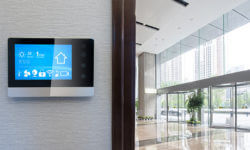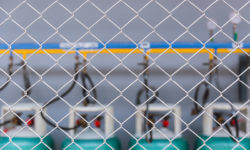Looking for alternatives to HFCs? You’re not alone. A2L refrigerants are growing in popularity around the world.
In 1987, a coalition of nations signed a treaty known as the Montreal Protocol. This agreement led to the banning of refrigerants responsible for the depletion of the ozone layer. Throughout the 1990s, ozone-harming chemicals were phased out in favor of a new chemical: hydrofluorocarbons, or HFCs. While HFCs helped heal the hole in the ozone layer, they have terrible side effects — scientists have discovered that HFCs contribute thousands of times more to global warming than CO2.
In 2015, chilled beam technology was projected to grow nearly double by 2020. Now projections are showing the U.S. will contribute around 28% in chilled beam system demands by 2026. This is largely due to energy efficiency regulations in North America. Currently building energy consumption is about 40% of the total energy consumption in the U.S. As a push toward lower carbon emissions continues to grow, it stands to reason so will technologies that reduce energy consumption. Chilled beams offer major benefits in energy efficiency.
Read more →Chillers use up about 20% of the total power generated in the country. What’s more, they can increase up to 30% additional energy usage of a building due to operational inefficiencies. This costs companies and building facilities billions yearly. Today, commercial buildings install efficient HVAC systems with an aim to improve a building’s sustainability and performance. Which brings us to water-cooled chillers, an essential HVAC component for a wide variety of commercial facilities. Continue on to learn more about water-cooled chillers, and find out if it’s the right choice for your facility.
Read more →When choosing an HVAC system for your business or facility, you have plenty of options. If you’re deciding between a heat pump or an air conditioner, there are a few things to consider. Both use compressed refrigerants to collect heat from your indoor space and transfer it outside. However, which system is more beneficial to your specific building? To find out, it’s important to know the difference between the two.
Read more →When it comes to HVAC, the goal is to achieve maximum comfort and increase energy efficiency levels with smart and eco-friendly technology. Each year, building and commercial property owners are seeing their HVAC needs evolve. That’s why it’s important to stay up to date with the latest HVAC trends to ensure you are getting the very best service.
Read more →According to a study by the U.S. Department of Energy, HVAC systems are the largest users of energy in commercial buildings. That being said, the cost of running your building’s HVAC system will be among your greatest expenses, so it’s important to carefully select the components of your HVAC design.
Read more →Owners of R-22 cooling systems in the United States will soon have to make some changes. On January 1, 2020, the production and import of R-22 refrigerant will become illegal. This is going into effect to further protect the environment and the ozone layer. But, what does this mean for your HVAC system? And what will your options be? Here’s an overview of what you should know.
Read more →Chillers do exactly what the name says – cool things down. In fact, chillers are necessary across a wide range of applications. But, how does a chiller work? In short, they prevent overheating and keep products cool to avoid harm to your machinery and bottom line. Here, we’ve broken down the elements of chillers and how they work.
Read more →Refrigerant recovery is outlined in the US Environment Protection Agency due to the extremely hazardous nature of the refrigerants and coolants. Each step and procedure should pass standards and safety benchmarks in accordance with proper disposal, reclamation, and retrieval. Here is a list of the types of refrigerant recovery methods and disposal methods.
Read more →








